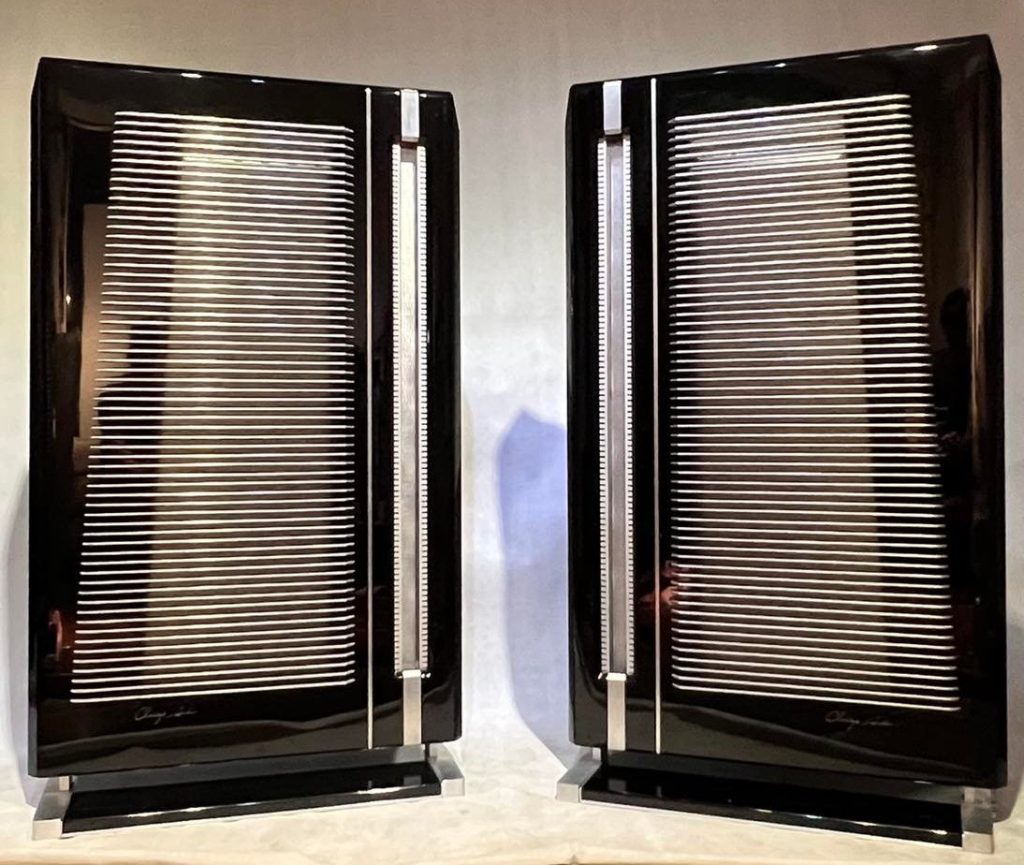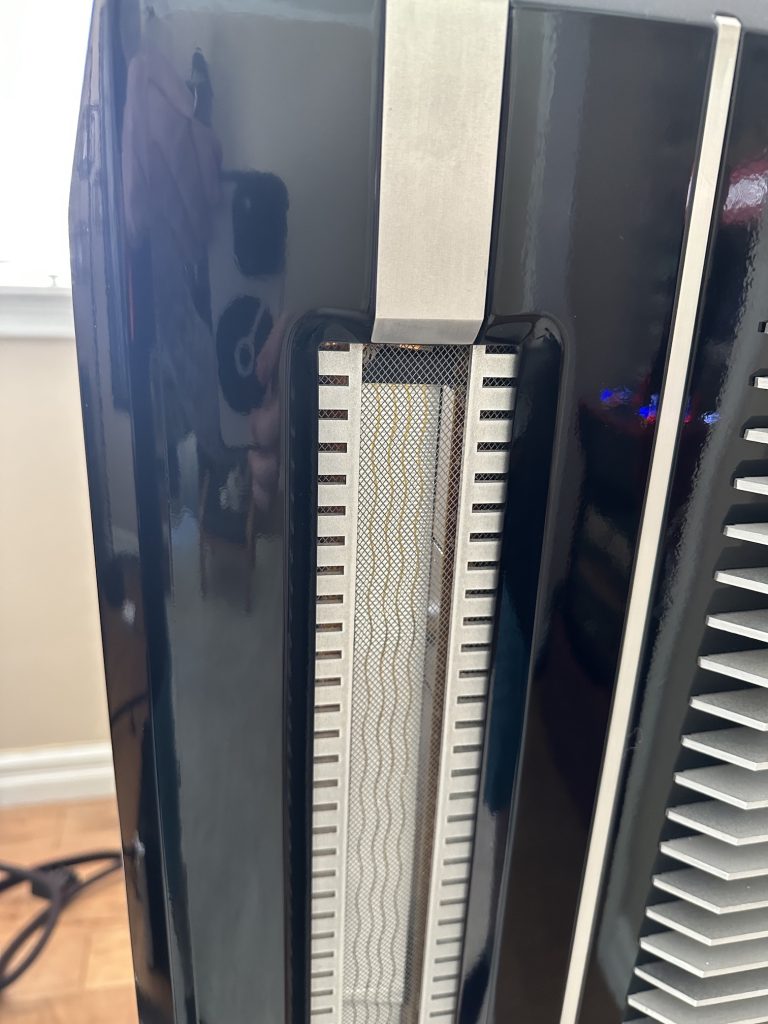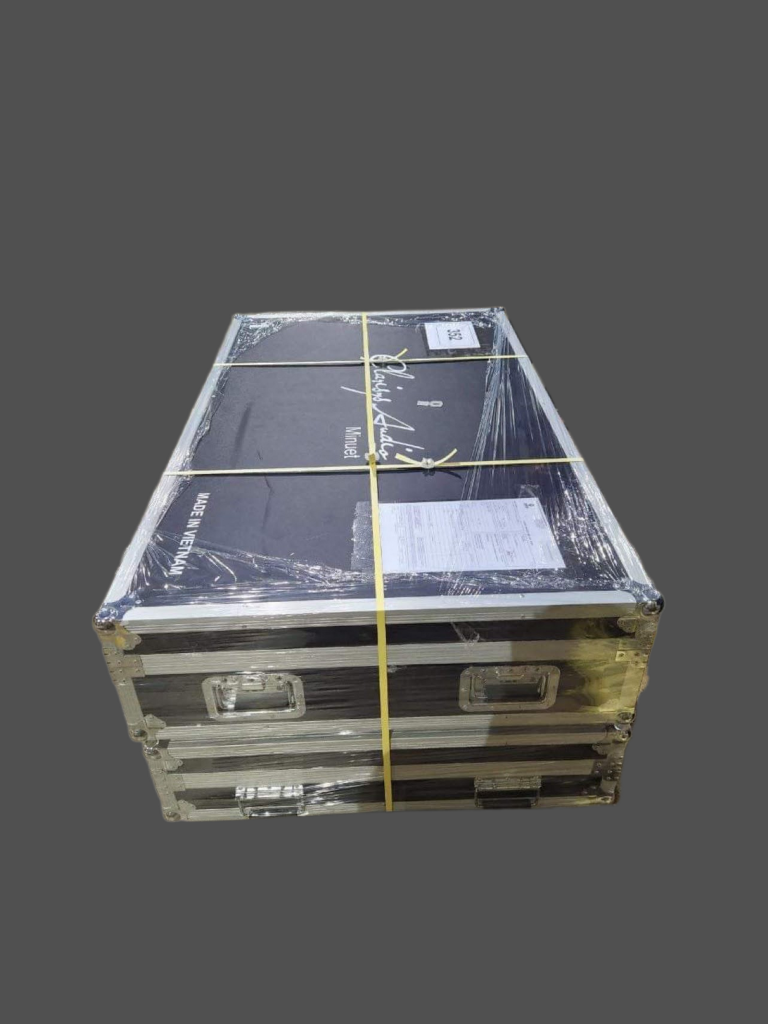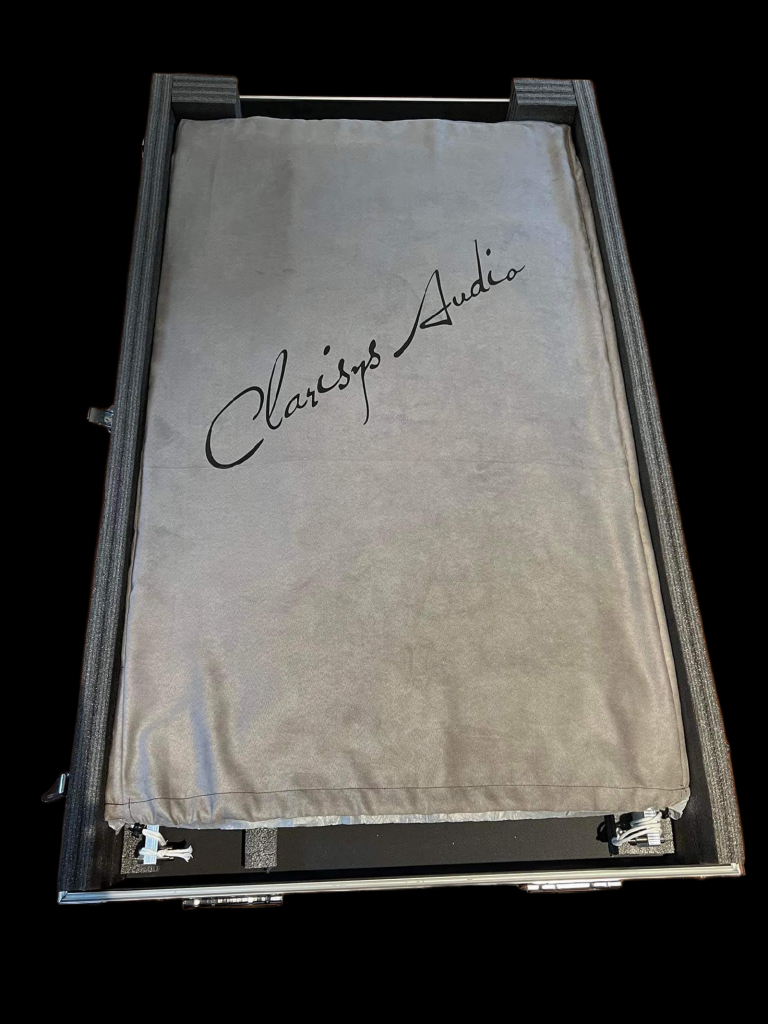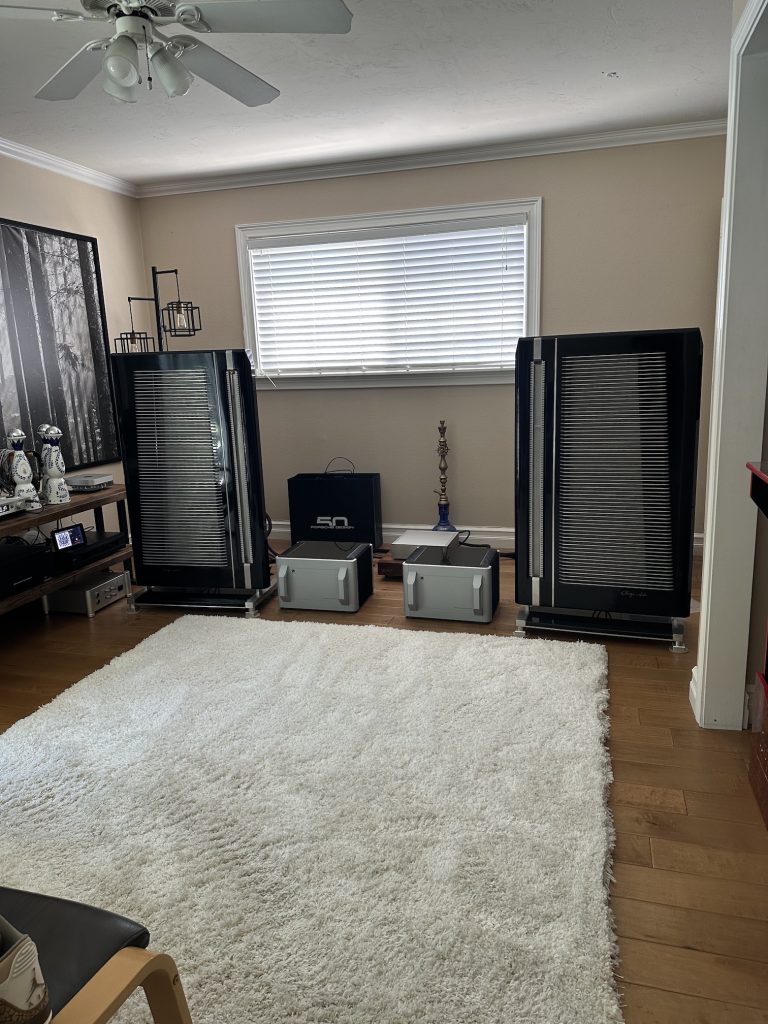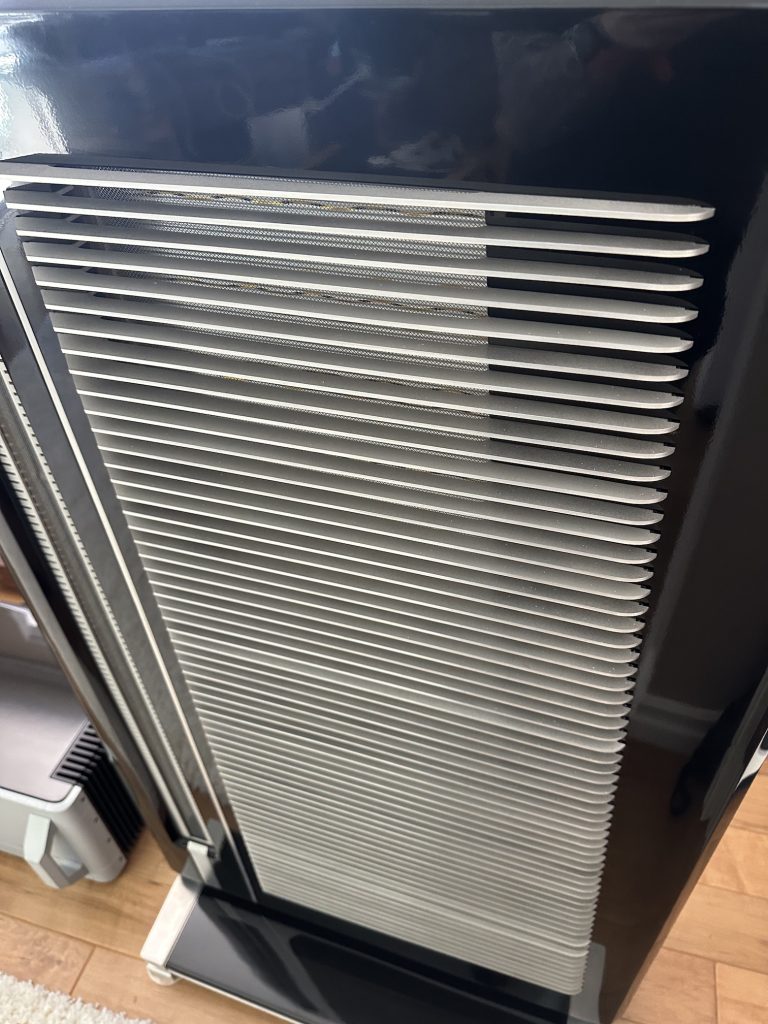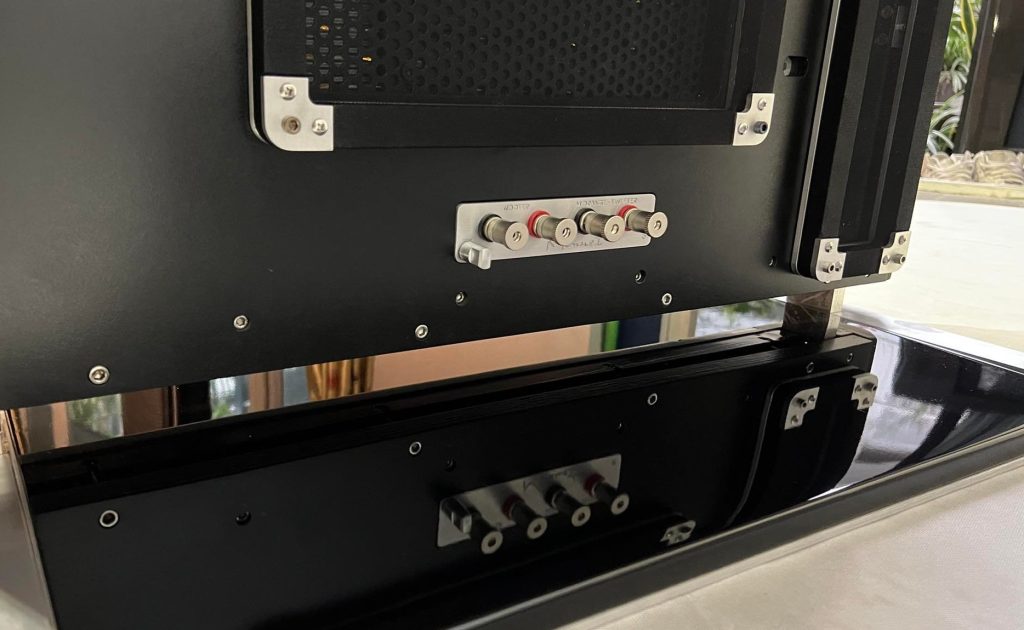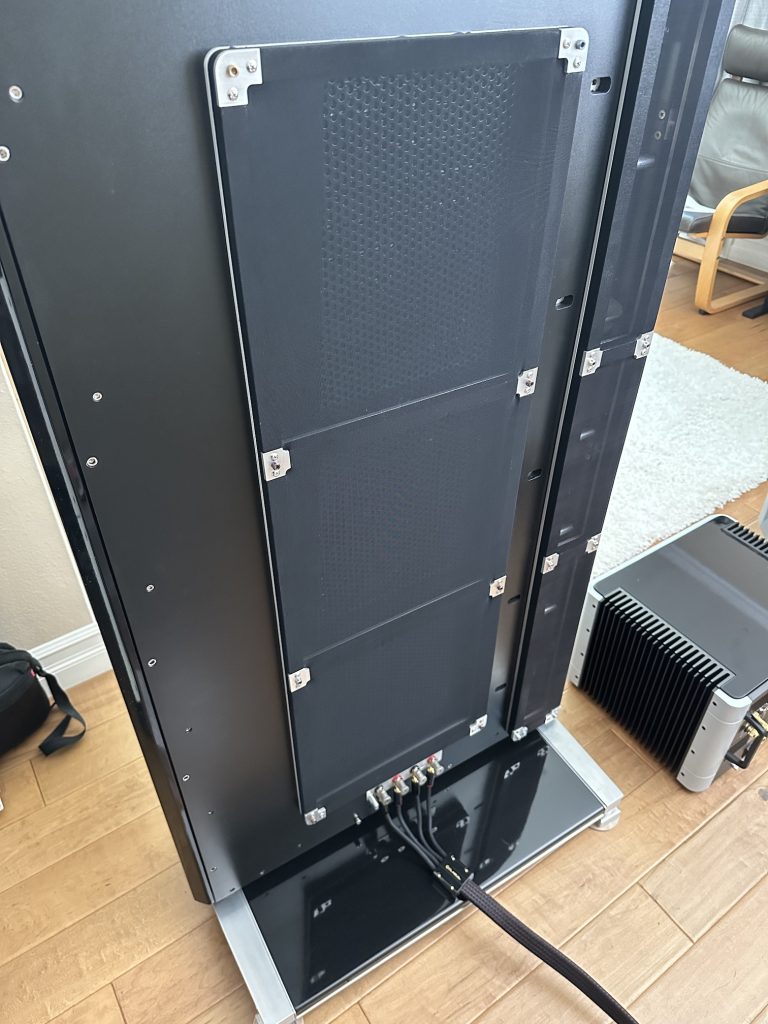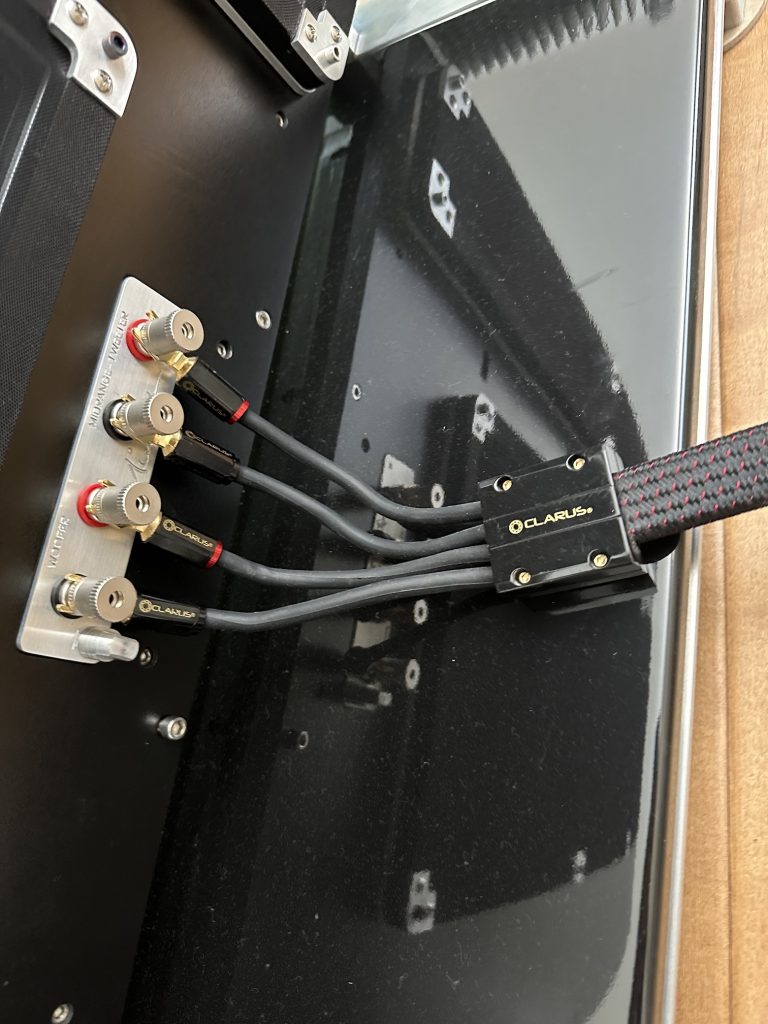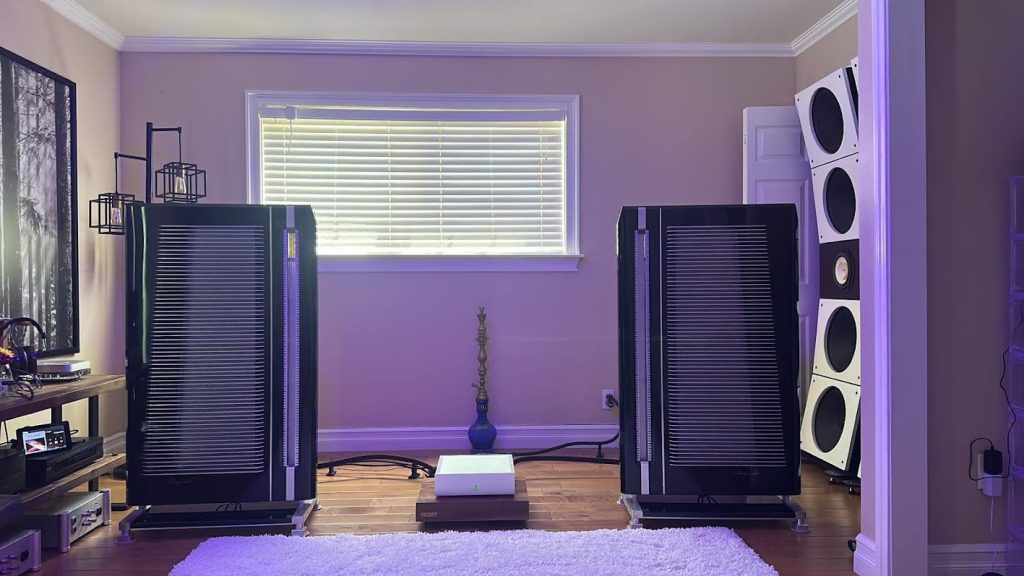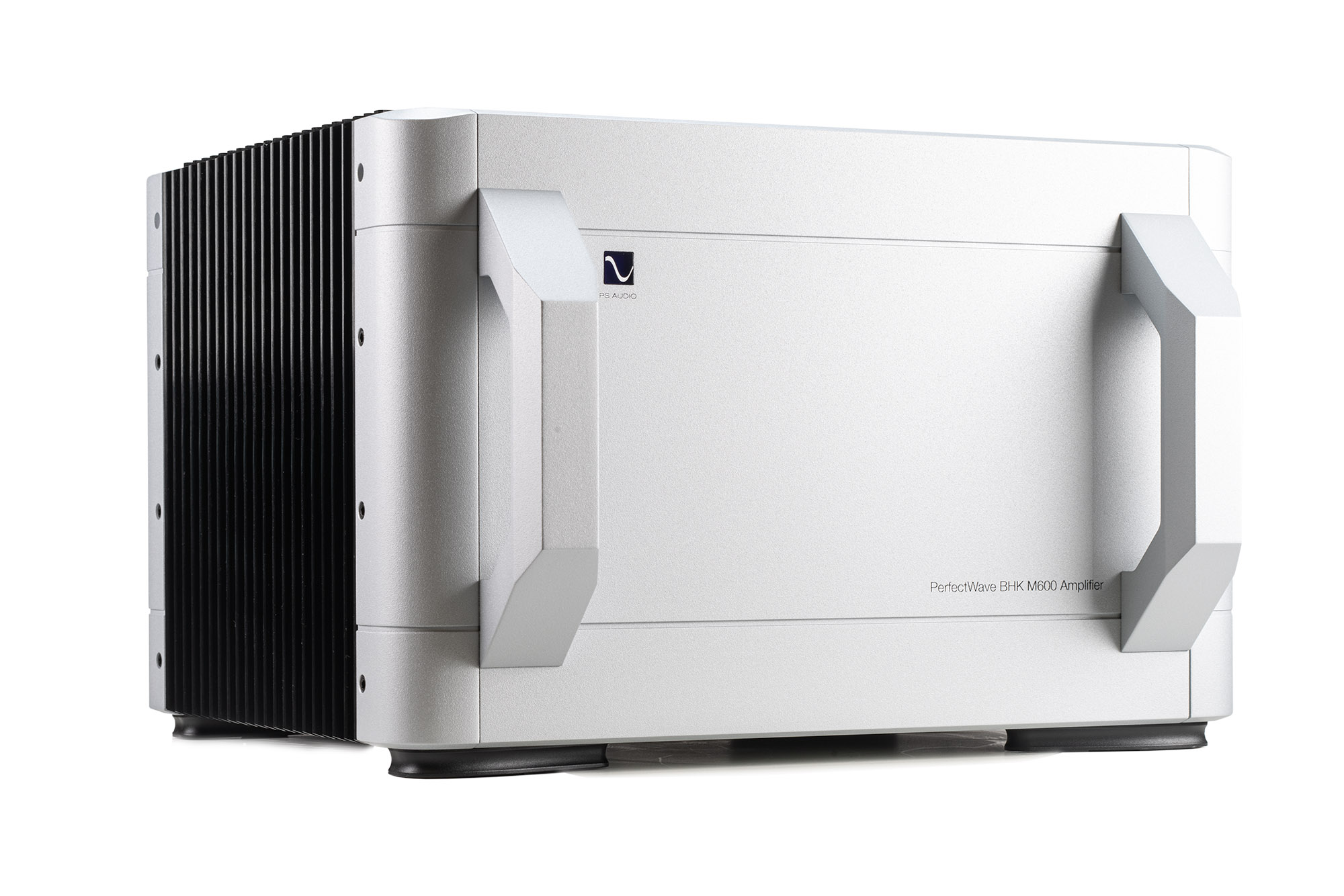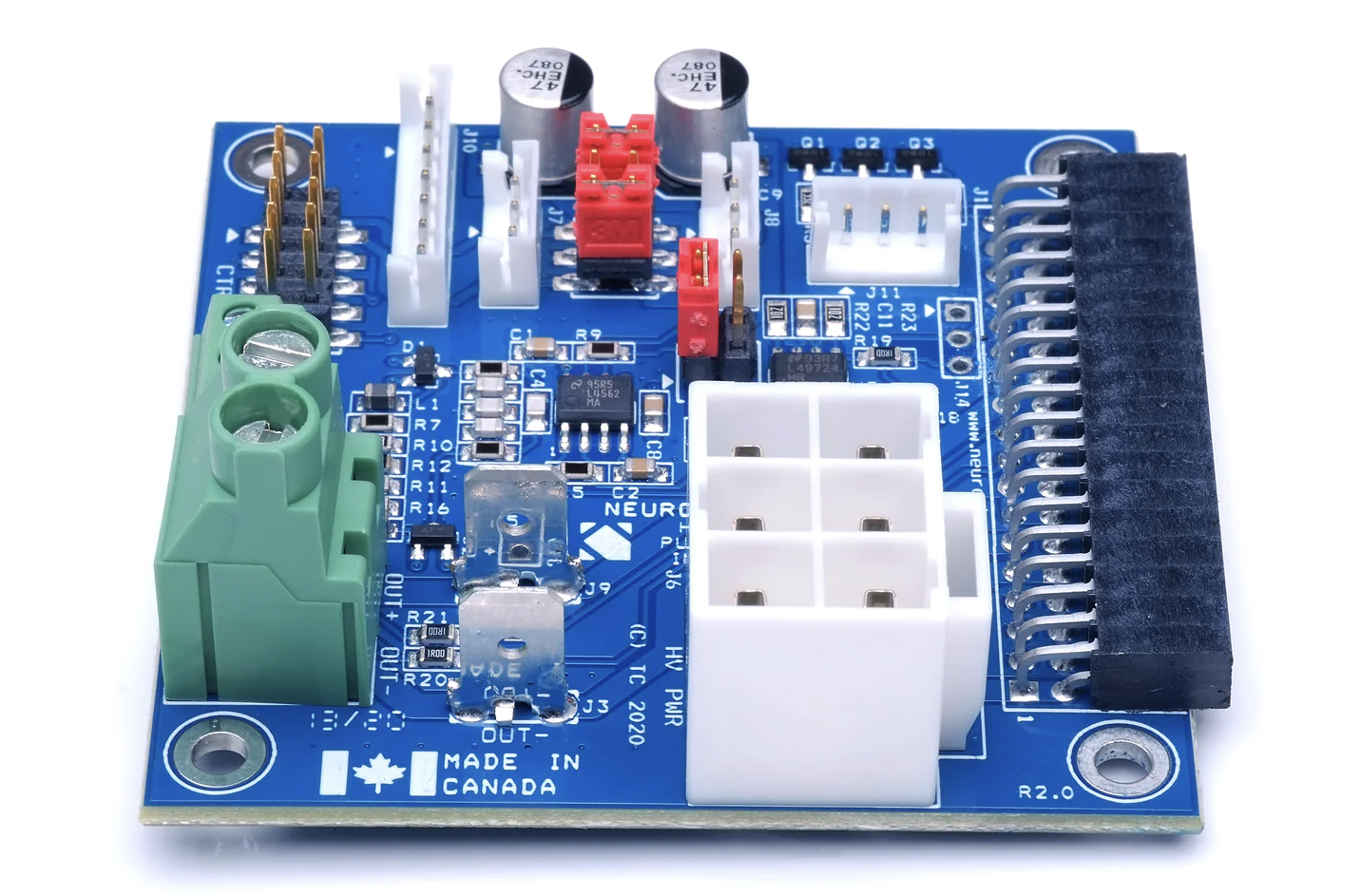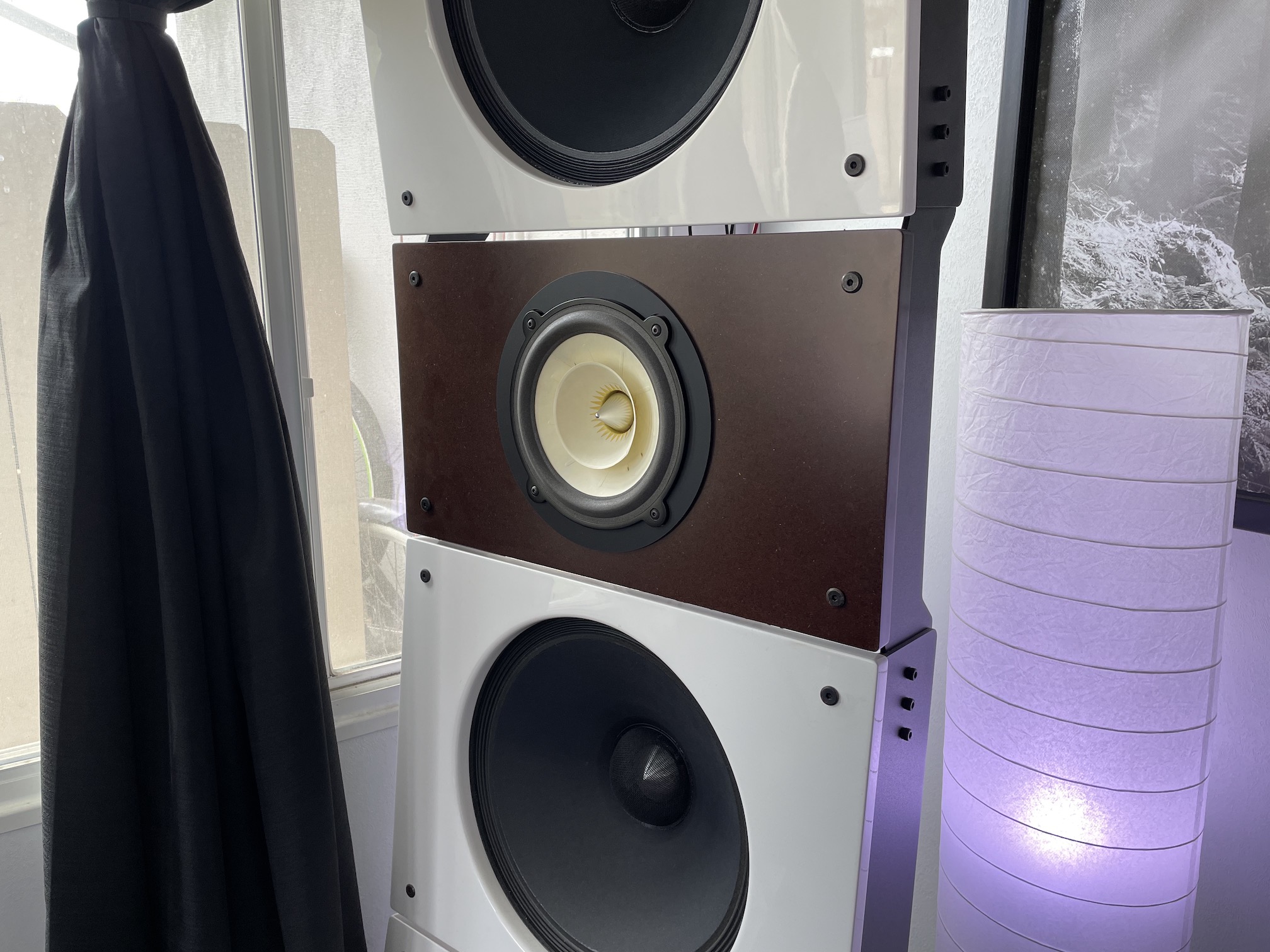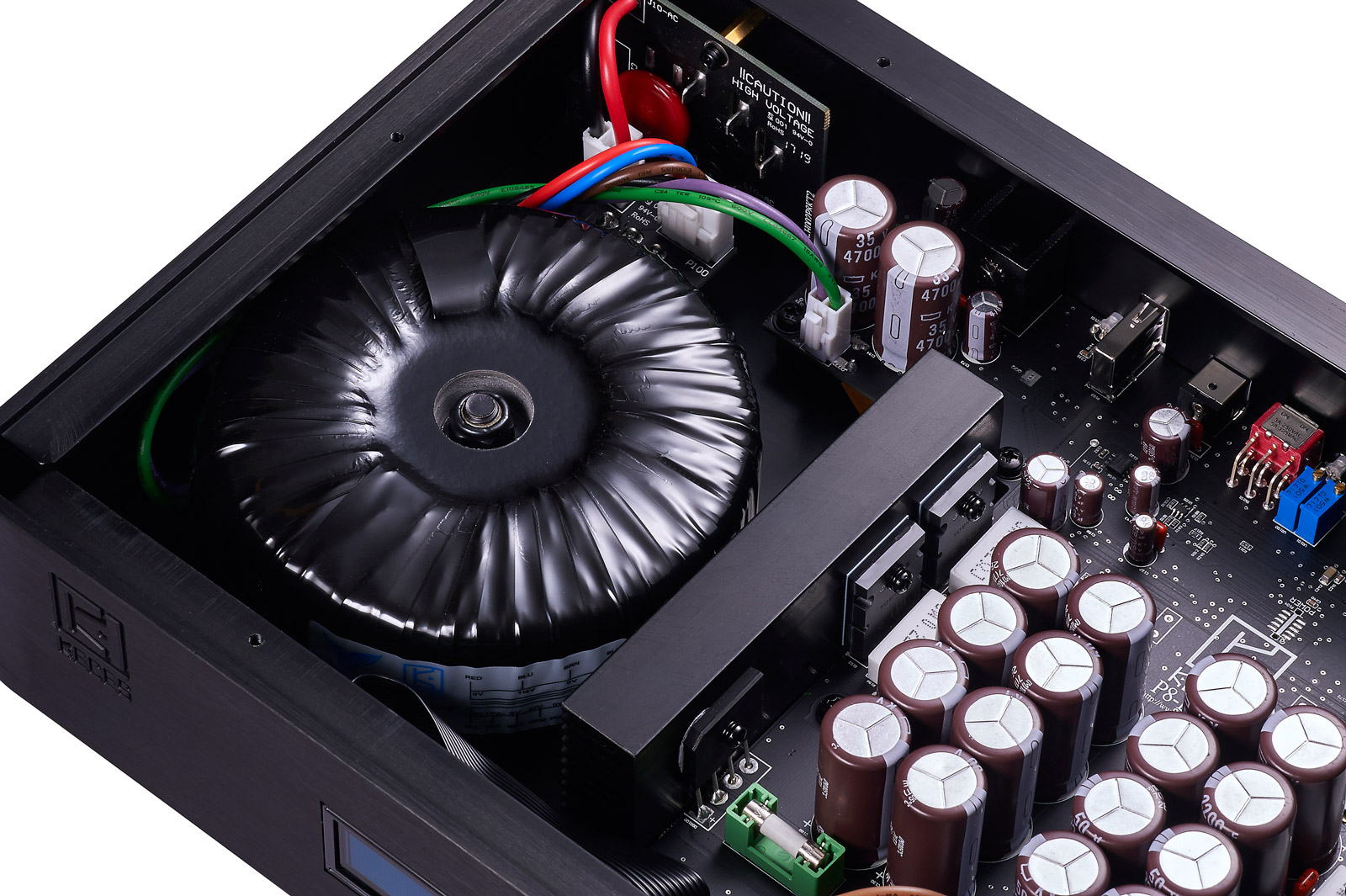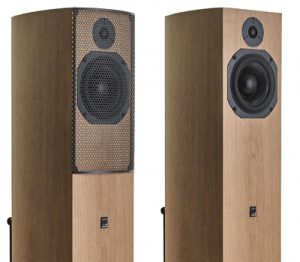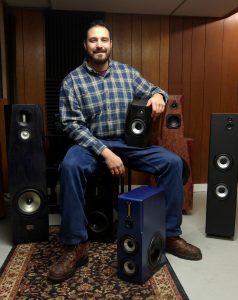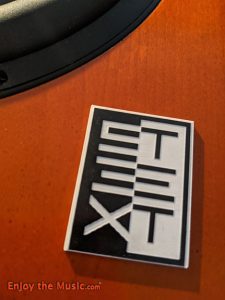I can't believe it! They are finally here.
From people that know me, you shouldn't be surprised that I have another ribbon speaker in my listening room. This has been a long journey, and started with Apogees back in the mid 2000s where I fell on the Apogee refurbishment journey. I had a few Divas, Scintillas, and other oddities. Once they were set up right, and you didn't breathe on them, nothing matched their sonic signature. For me they were the ultimate loudspeaker. They weren't without compromise however, and I'll get into that later.
Unfortunately I missed out on the Apogee heyday as that was happening in the 80s and 90s when I wasn't old enough to even know they existed. But it was fun getting into it in the later years, running into audiophiles of a different generation, and talking about it. As soon as I mentioned an Apogee ribbon speaker their eyes would light up, and they would recall the moment they first heard them. They usually remembered the song, the gear, and even the show. It was that kind of memory that stuck with them.
I'm not going to spend too much time mentioning that brand, but it's hard to avoid. They were really pioneers at the time and created something special. But, since I got into the game a bit late, of course, the examples I was finding were pretty beat up. Either from neglect, or just time itself. My collection ran the gamut, I had a pair that appeared like they were used for bullet practice, and I had a pair that looked like they came out of a museum complete with Krell amplifiers. All of them suffered similar fates however, as you can't control aging even in the most perfect environments. The truth is the original Apogee speaker was old tech, old materials that just degraded over time. Sure, they could have probably used more exotic materials (and some of the later 90's models did) but eventually things would start to fail.
We're talking about these delicate aluminum membranes suspended between hundreds of pounds of magnets and iron holding the magnets. The earlier models had pure ribbons as well, meaning not backed by a material like Mylar or Kapton. Backing a ribbon gives it stability and also allows you to cut traces into it making it appear like a bigger speaker which would help on the electrical side of things (bigger voice coil higher impedance, etc.). That had a tradeoff of course like all things do, but yeah suffice to say the earlier models were ticking time bombs. The wood would rot, the foam would rot, etc. In the early 2000s a few people saw this as an opportunity and started building replacement parts, but it turned into lipstick on a pig—meaning if the frame was rotting (particle board) or what have you, then they wouldn't last long, then you would be hit with the inevitable "complete rebuild" case. Things started adding up, and it took the fun out of it. Just to mention transporting these behemoths was another issue all in itself!
For a while there the magic was lost, and eventually my refurbished speakers met their fate. Once again and I was in a period of my life where financially it didn't make sense to pump more money into them, so I took a long break. During this break, a few Apogee-like clones came out with their own tech. Most a similar take, similar size and stature, at a much higher price. I couldn't justify it either because they also just didn't sound that great admittedly. With this came a few more players in the market supplying aftermarket parts to the Apogees, but the complexity with installing and logistics of moving them around just sucked the fun out of it. Then one day, a new brand of ribbon speakers popped up, Clarisys audio. Based on my memory, this was in the Facebook hey-day, late 2000s. It appeared to be a Vietnamese-owned brand, and the speakers were obviously a huge homage to the Apogee look. A ribbon mid/tweeter and a magneto-static woofer ribbon. Information was scant, and I had no luck contacting them after several tries, I just started to feel it was vaporware. I gave up eventually.
Fast forward to now —post pandemic, post everything, I started hearing about the brand again. This time on my favorite medium, YouTube, where a local US dealer started showing videos of a model called the Minuet. With sound! There I watched, mouth agape, when I saw these newer models with the Clarisys name. That re-sparked my interest, and I then began my saga of searching for more information. This is where things got really cool!
At this point I discovered Clarisys was also in the game of supplying new parts for Apogee speakers, allowing any DIY person if they so desired, to rebuild their beloved Apogee speakers. One of the early players that started supplying parts ultimately at one point decided it was bad for business to supply the woofer parts to the end user and employed a dealer install network instead. Can't say I blame him, at the time there were a few failed attempts at installing which started to get costly and time consuming. But I believe the right move would have been to offer two solutions, DIY (with paid support) or a pro install network, but that isn't the way things played out so that is the way things went.
Clarisys, however, was big on the DIY effort, or they would help with the install. Whatever you felt comfortable with. Freedom! Nice. Not only that, this is when I noticed a new name in the Clarisys world, a dear old friend of mine Florian Wiegand. See, I met Flo many years ago on a now defunct Apogee forum where we would get together and chat all things Apogee. Flo was one of the younger guys (as was I), but he was very passionate about the brand. He went through the ringer with his speakers with refurbishment, and at one point landed on the holy grail of Apogee speakers, the "Grand," which was their last statement speaker before they got shut down. They were in a sad failed state, and he reverse engineered them basically and brought them back to life. That granted him legendary status and the rest is history.
Flo and I stayed in touch over the years, but as time went on, we got older and I had kids, and ribbon speakers and kids weren't a good match so I went back to dynamic speakers for a while, and then we weren't in touch as often. I figured he moved on too, but I was wrong! All the while he was starting to work with the Clarisys brand, building them up, getting a dealer network launched, helping get a production line going, and ultimately building loudspeakers and being able to bring them to a worldwide network. All the while also providing parts, if needed, to the Apogee brand. This time learning from past mistakes of others and using better adhesives, foam, etc., but again I won't get into that too much.
Florian saw an opportunity to team a new brand, looking at engineering design mistakes of other brands and making it better. Not only from an aesthetic point, but from a build quality point. After years of being defeated by Apogee he now knew exactly how to build a recipe to launch this brand, and how to do it right. Obviously with this comes a much higher cost, not only to mention inflation in general and cost of goods going up everywhere, but also by using more exotic materials. See, one of the biggest issues with Apogee was just moving them around. You had to be ultra-delicate in the simplest of maneuvers, if not they would warp permanently and cause very costly damage.
The Clarisys brand of speakers are robust and free from this problem. They have a metal exoskeleton frame. They use more dense wood. They can literally be flipped upside down and you don't have to worry about damage happening to the ultra-delicate ribbon membranes. This was one of the largest challenges to overcome, and it was figured out.
On top of that, the other issue with "foam rot" was overcome by using a more exotic material similar to piano felt. See, the woofer membrane being clamped vertically, requires some sort of dampening material to be placed between the wooden clamps and the aluminum membrane, otherwise you would hear the membrane hitting the clamps. Before, when foam was used, foam would rot over time and cause a buzzing/kazoo sound which made them completely unlistenable. This design flaw was overcome which will bring a lifetime of amazing ribbon sound without the fear of degradation.
There is a lot more to cover. Another downside to ribbon (or ribbon like) speakers is the fact that electrically they are almost a dead short to an amplifier. Conventional cone drivers have a long voice coil that allows you to tailor the electrical characteristics to just about any crossover to make the load easy on just about any amplifier. Ribbon membranes are the voice coil, effectively, so the only way to make them appear longer is to divide them up. This is why the ribbon speaker has traces cut out on it, and this is why the mid/tw ribbons are segmented. This can turn a 48" driver into a 200" driver all without it appearing any longer to the human eye. The issue with this, of course, is now you have to provide structural support to the membrane so you have to use some sort of material to hold it together. Kapton is used here as it can withstand high heat, which is an issue with large music passages. Clarisys standardized on this process as they know that Apogees failure as well was requiring the largest demand on their amplifiers, which also caused people to go on this ridiculous journey of compromise of finding "that perfect amp," which as you know doesn't exist. By segmenting the ribbon perfectly and matching it with a world class crossover, these speakers can be driven by any amplifier.
Yes, even tube amps.
I know, some of the older Apogee folk are coming out of the weeds here and will say they ran their speakers on tube amps, but I can tell you that I personally demonstrated most of them, and they just didn't sound good. Dynamics were lost and so was control. Only the most exotic tube amps could handle the job, but that really limited your choices to a handful of brands. Works out great if you find one you can afford, and you appreciate its sonic signature, but I always felt it was too much of a compromise. So it was that, or this huge 100+ lb amp that drew 20 amps of current, tripped your breakers, turned your room into a space heater, etc. That just isn't for everyone. If it's for you, awesome. But what I'm saying here is that Clarisys speakers now kill that limit and open themselves up to more audiophiles that like other things.
The other issue was one of logistics that I mentioned. All Clarisys speakers are shipped in specially designed flight cases lined with enough materials to suffer even the largest bumps on the road. Then they are strapped to a pallet. The flight cases are handy too, complete with handles (go figure) so it's not super awkward when having a friend help move them around. Other speakers are put in a coffin it seems where they will ultimately just end in their death, but I digress.
Setup was a breeze! You simply flip them upside down and insert the (huge) aluminum stands/feet, secure with Allen screws and then flip them back over. No fear in any damage, and they feel ultra-sturdy. No warping, no flexing. It reminds me of the egg drop test we would do as kids for a fun activity. Figure out a way to drop an egg from a building and see who engineers the best option to protect the innards. No pseudo-science here, just basic engineering and money. Crazy to think the older Apogees were factory shipped in cardboard! Just to give you an idea you can't judge their weight based on their size, see even being a panel speaker (flat) they are ultra-heavy.
Magenepans, for example, are very light in comparison. They don't use such exotic materials or magnets. I'm not knocking the brand or the speaker, they sound lovely and are cost effective so they have cornered their market, but in no way can you compare them to the Clarisys speakers. We're talking Prius to a Ferrari here. I'm sure that comment will tickle some folks, and again I love Maggies for what they are, there just is no comparison, and rightly so, as the price point isn't even remotely the same.
The woofer ribbon is also what is called "double sided." Apogee played around with this tech during their later years, but basically what that means is, it's folded on top and continues down the back of the speaker as well. So really the woofer ribbon is twice as tall as what you are seeing. This also helps with the electrical characteristics, again making the speaker appear longer to the amplifier. See a pattern here?
So, all of this engineering hubbub out of the way, which really, I am keenly interested in as I appreciate how thing work. Clarisys really nailed all of the shortcomings of their competition (and older tech of non-competition) and knocked it out of the park. But what about the most important part? How do they sound?
So fast forward. Once I saw Florian was back in the game, involved with this brand, AND they were starting to become marketed in the states—by Suncoast Audio in Sarasota County Florida—I just couldn't wait to reach out and get the scoop here! I wasn't sure what would happen, as they seemed to be on this fast-track journey to get the word out and start hitting some of the local audio shows here in the states to show off this new tech. I reached out, introduced myself as this fan of Apogees, mentioned I knew Florian, and bam the rest is history. Well, to me anyway but to you, what ensued was very delightful. They replied with some excitement that there was both an Apogee/ribbon speaker fan and a writer of a well-known magazine just chomping at the bit to hear these things and hopefully write about them!
What was equally as great here was that it rekindled my friendship with my old pal Florian, which has been amazing because now we're talking about Clarisys as a brand, how they got started, where they are headed, and even getting the inside scoop about future models. Talk about exciting!
So, with the help of Suncoast audio and Florian, they promised me that I'd get the scoop on the Minuet model. The Clarisys Minuet is their lowest cost offering, but don't let that fool you. Hovering around $46,000 they aren't cheap by any means, but they are worth every penny.
Another engineering thing (sorry, I know) about planar speakers is their sensitivity. The higher the sensitivity, the less watts required to generate sound pressure. This was another shortcoming of planar speakers, so one way to overcome this is by switching to a more exotic magnet material. They chose to give an option of Neodymium over the standard Iron option for the magnets, and in fact they are standardizing this option here in the States. They will still offer non neodymium to non-US customers at a cheaper cost, but I won't go too far into detail here as we're here in the States, so this is what we get. To be honest, I don't really see the benefit of saving a few thousand dollars to go with a less superior magnet material but to each their own.
I have had the luck and honor of being one of the first reviewers with these speakers (counting my blessings here) and they have been very patient with me while I build my business, be a husband and a father, and listen to these magnificent speakers. What I've done is put them in my listening room/office and I leave them playing music almost 15 hours a day. They are quite broken in, so I can safely say they are going to sound as good as they ever will, which is fantastic!
You see another shortcoming of ribbon woofers (well, magneto-static) was their SPL. You could get reasonable bass from them if placed properly, but nothing like a cone driver. What you got was realism and tonality, timbre that was unmatched. But it was a compromise. Sometimes I liked bass-heavy music. I feel a large part of listening to music is feeling it, too. When Florian told me that I could listen to these as loud as I wanted to, I knew he wasn't joking. He's not your typical audiophile listening at <90db to classical music. He listens to everything, and he isn't afraid to turn the volume up. Sometimes you just need that cathartic experience (for those that say you don't, you're lying) and finally, Clarisys delivered a speaker that can provide that with aplomb. Dynamics galore! LOW bass (we're talking high 20s low 30s in the frequency range) and just magical mids and highs that only a properly designed ribbon speaker can provide.
You know what I'm talking about. If you haven't heard music through a ribbon loudspeaker you are missing out. The palpability of sound is just exquisite. I almost feel like I am connecting with the music on a spiritual level here, it's just that good. The piano sounds like a piano. The voices sound like real human voices. Horns, drums, drum machines, you name it, just sure excellence and Clarisys NAILED it.
Let me be clear here, when the Minuet was in route, I was immediately already worried about SPL. Florian ensured me that people at the shows were really impressed, but I knew I was on a different level here. Just admitting to it I guess, but even I was surprised when I first started playing music.
I chose to keep a Class D amp for the first few months of listening. Why not? I won't mention which amp here as I don't want to muddy the waters, but I wanted to prove that not only can they sound good with Class D (which has current limitations depending on its design) but they can sound good with any amplifier. I tried tube amps, both single ended (yep) and push pull, all shined and was able to implement their unique sonic signature without the ribbon "getting in the way" by being designed poorly.
I also though what about trying a larger amplifier? I mean, older Ribbon speakers really benefitted from it, not from a SQ perspective per se, but more of a dynamics position. I tried one of the largest amps I could get my hands on (sorry, all my old Class A amps are gone—Krell, Plinius) the PS Audio M600 monos, and while they definitely carried their own sonic signature (as all amps do) and sounded absolutely stunning and beautiful on their own, I can't say they added much "heft," having more current reserves and running more biased in the Class A side of things. But, I'll write another article on these amps in an upcoming review, so stay tuned there. I just thought it be worth mentioning that if you aren't into it, you don't have to have large current-reserve amps on hand for these like you would with an Apogee or ribbon speaker of yore.
I have listened to everything through these speakers. I've had friends over that wanted to bump some hip-hop (Kendrick Lamar, Lil' Baby, Aceyalone, Outkast, Tyler the Creator, etc.). I've had people over that have done deep dives in Classical (the obvious ones like by Shostakovich, Ligeti, etc.) and then had some fun with 70's rock. Then Jazz. Then ambient (oh ambient is fun of course with any dipole speaker), but instruments really shine. The piano sounds like a piano. Trumpets blast into space and feel like they're right there. These are a close your eyes speaker. They really do it all for all types of music. Gone are the limitations of most panel speakers.
Aesthetics
This is a personal one, obviously. But looking at these you can't help but see where it's rooted in. The trapezoidal shape is there and reminiscent of an Apogee and pays a homage to the brand that "started it all" (in my humble opinion), but with some flare added that catapult them into today's age. Better exotic paint materials (did I mention they will paint them in any color you want? Included in the price!), and a neat grill design on the fascia—these horizontal slats, if you will, all hand cut (I have the videos to prove it) adding a sense of contemporary beauty but also can be painted/color matched if desired. These also provide way more protection to the already delicate membrane by outside elements, so not only eye catching but functional.
The rear also has some attention to detail. The drivers have removable rear covers as well making these serviceable down the road if needed.
Inside are just as beautiful, depending on one's perspective of course (ha ha), but what is comforting is that even the ribbons themselves are interconnected internally with ribbon cabling! Talk about a purist design! Too far? You be the judge. But you are getting your money's worth.
Now we can have our cake and eat it too with the Clarisys speaker line-up. Ribbon magic, DEEP accurate bass, easy to drive and use any amp you choose, and know they are built to last and not have to worry about a ceiling fan in the room blowing a hole through them.
THIS is a life-time speaker, and I am serious when I say this that once you get an opportunity to hear these, you will immediately start to try and figure out how to keep them and keep them forever. I can't wait to review their larger brethren. Yes, these are the smaller ones, and they just get bigger from here. But now that I've had these here for so long, do I really need to? The Minuets are just amazing, and I feel would fit just about anyone's needs. But if you have that itch, they can scratch it for sure. This will be one of my most recommend listens if you're able to, and at that point you will know what I'm talking about. Finally, Apogee lovers, you have an upgrade path and something viable. Thank you, Clarisys for this wonderful opportunity.
Minuet (Neodymium)
Retail: $46,000
Clarisys Audio
https://www.clarisysaudio.ch/Minuet/
US Distribution / Florida Dealer
Suncoast Audio
https://www.suncoastaudio.com/products/clarisys-audio-minuet




